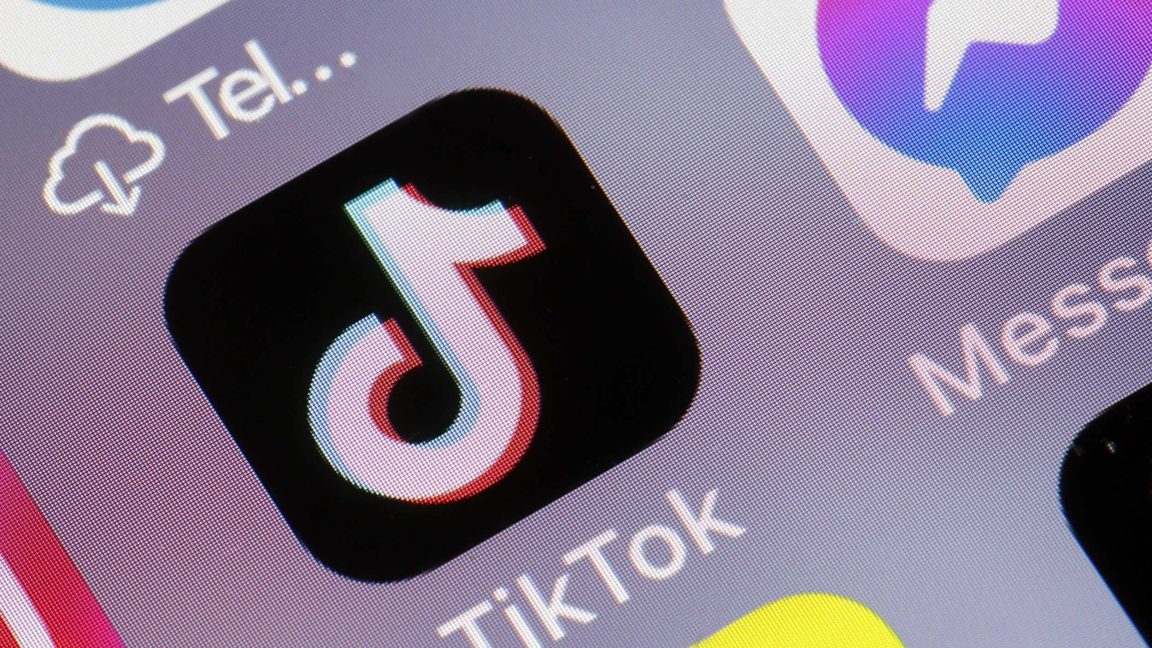
Credit: Getty Images | Chesnot
The release of Google's Veo 3 video generator in May represented a disconcerting leap in AI video quality. While many of the viral AI videos we've seen are harmless fun, the model's pixel-perfect output can also be used for nefarious purposes. On TikTok, which may or may not be banned in the coming months, users have noticed a surplus of racist AI videos, courtesy of Google's Veo 3.
According to a report from MediaMatters, numerous TikTok accounts have started posting AI-generated videos that use racist and antisemitic tropes in recent weeks. Most of the AI vitriol is aimed at Black people, depicting them as "the usual suspects" in crimes, absent parents, and monkeys with an affinity for watermelon. The content also targets immigrants and Jewish people. The videos top out at eight seconds and bear the "Veo" watermark, confirming they came from Google's leading AI model.
The compilation video below has examples pulled from TikTok since the release of Veo 3, but be warned, it contains racist and antisemitic content. Some of the videos are shocking, which is likely the point—nothing drives engagement on social media like anger and drama. MediaMatters reports that the original posts have numerous comments echoing the stereotypes used in the video.
Hateful AI videos generated by Veo 3 spreading on TikTok.Google has stressed security when announcing new AI models—we've all seen an AI refuse to complete a task that runs afoul of its guardrails. And it's never fun when you have genuinely harmless intentions, but the system throws a false positive and blocks your output. Google has mostly struck the right balance previously, but it appears that Veo 3 is more compliant. We've tested a few simple prompts with Veo 3 and found it easy to reproduce elements of these videos.
Clear but unenforced policies
TikTok's terms of service ban this kind of content. "We do not allow any hate speech, hateful behavior, or promotion of hateful ideologies. This includes explicit or implicit content that attacks a protected group," the community guidelines read. Despite this blanket ban on racist caricatures, the hateful Veo 3 videos appear to be spreading unchecked.
TikTok notes that it uses both technology and human moderators to identify rule-breaking content. However, the volume of uploads makes timely moderation difficult. While the racist videos racked up a lot of views, a TikTok spokesperson tells Ars that more than half of the accounts cited in the MediaMatters report were banned for policy violations before the report was published, and the remainder have now been removed.
As for Google, it has a comprehensive Prohibited Use Policy that bans the use of its services to promote hate speech, harassment, bullying, intimidation, and abuse. The videos uncovered by MediaMatters all seem to fall under one or more of these categories. In a perfect world, Veo 3 would refuse to create these videos, but vagueness in the prompt and the AI's inability to understand the subtleties of racist tropes (i.e., the use of monkeys instead of humans in some videos) make it easy to skirt the rules.
TikTok, being the world's leading social video behemoth, is a natural place for these videos to spread. It's not exclusive to TikTok, though. X (formerly Twitter) has gained a reputation for very limited moderation, leading to an explosion of hateful AI content. This problem could also get worse very soon. Google has plans to integrate Veo 3 into YouTube Shorts, which could make it even easier for similar content to spread on YouTube.
TikTok and Google have clear prohibitions on this content, which should have prevented it from being seen millions of times on social media. Enforcement of those policies, however, is lacking. TikTok is seemingly unable to keep up with the flood of video uploads, and Google's guardrails appear insufficient to block the creation of this content. We've reached out to Google to inquire about Veo 3's safety features but have not yet heard back.
For as long as generative AI has existed, people have used it to create inflammatory and racist content. Google and others always talk about the guardrails to prevent misuse, but they can't catch everything. The realism of Veo 3 makes it especially attractive for those who want to spread hateful stereotypes. Maybe all the guardrails in the world won't stop that.

-
 C114 Communication Network
C114 Communication Network -
 Communication Home
Communication Home


